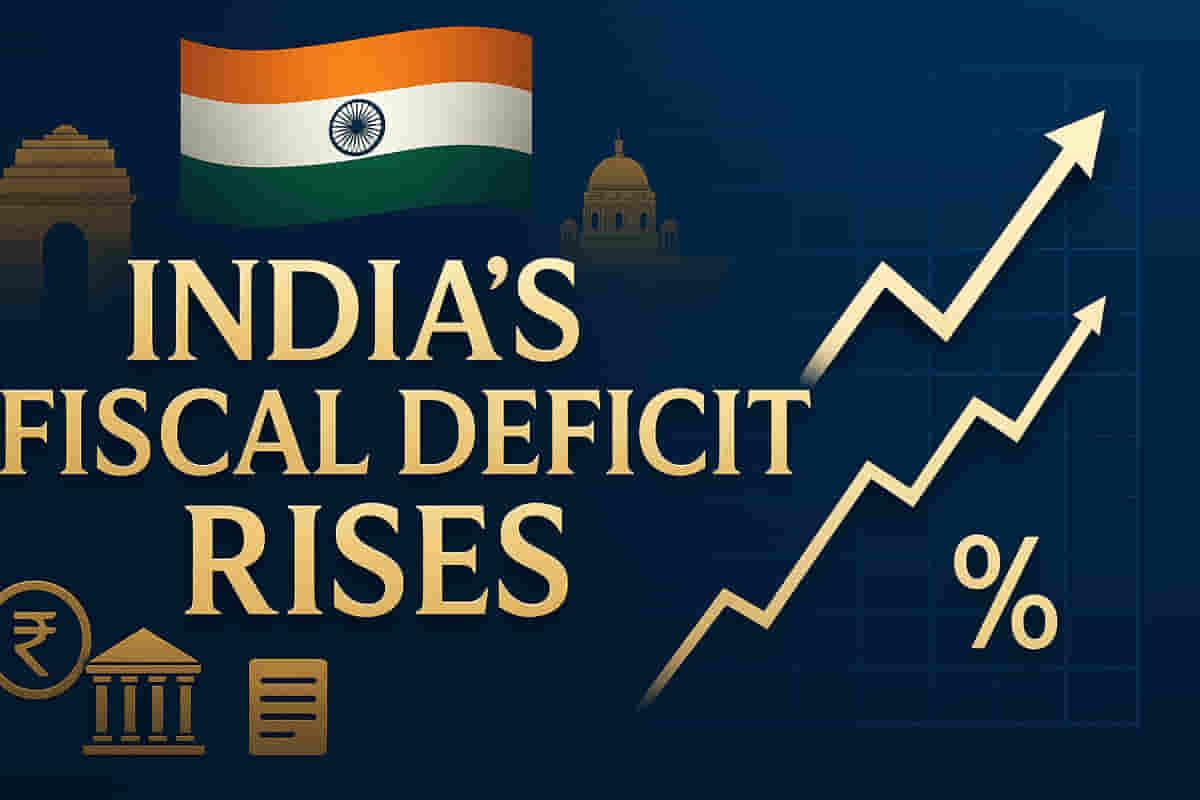India's Mid-Year Fiscal Deficit Reaches 36.5% of Target, Up from Last Year
Economy
|
31st October 2025, 11:26 AM

▶
Short Description :
Detailed Coverage :
India's fiscal deficit for the period April to September has been reported at ₹5.73 lakh crore. This figure represents 36.5% of the total budget target for the entire fiscal year, a notable increase from the 29.4% recorded during the same period last year.
Total government receipts amounted to ₹17.30 lakh crore, which is 49.5% of the annual budget estimate. Government expenditure stood at ₹23.03 lakh crore, accounting for 45.5% of the planned spending. Revenue receipts were ₹16.95 lakh crore, comprising ₹12.29 lakh crore from taxes and ₹4.66 lakh crore from non-tax sources.
A significant contribution to non-tax revenue came from a dividend of ₹2.69 lakh crore paid by the Reserve Bank of India to the central government. This inflow helped to partially bridge the fiscal deficit. The revenue deficit itself was ₹27,147 crore, which is 5.2% of the annual target.
The government remains committed to its medium-term goal of reducing the fiscal deficit. The target is to bring it down to 4.4% of the Gross Domestic Product (GDP) in the fiscal year 2026, aiming for a gap below 4.5% by FY26. This is expected to be supported by strong tax collections and continued capital expenditure.
Impact A higher-than-expected fiscal deficit can lead to increased government borrowing, potentially pushing up interest rates and increasing the cost of capital for businesses. It may also signal fiscal strain, affecting investor confidence. However, the clear target for reduction provides some reassurance. Impact rating: 7/10
Difficult Terms: Fiscal Deficit: The difference between the government's total expenditure and its total revenue (excluding borrowings). It indicates how much the government needs to borrow to finance its operations. Revenue Receipts: Income generated by the government from taxes and other sources that does not create a liability for the government. Tax Revenue: Income collected by the government from taxes imposed on individuals and corporations. Non-Tax Revenue: Income received by the government from sources other than taxes, such as dividends from public sector undertakings or the central bank. Revenue Deficit: The difference between the government's revenue expenditure and its revenue receipts. It indicates the government's spending on day-to-day operations is exceeding its income. Gross Domestic Product (GDP): The total monetary or market value of all the finished goods and services produced within a country's borders in a specific time period. It is a broad measure of a nation's overall economic activity.